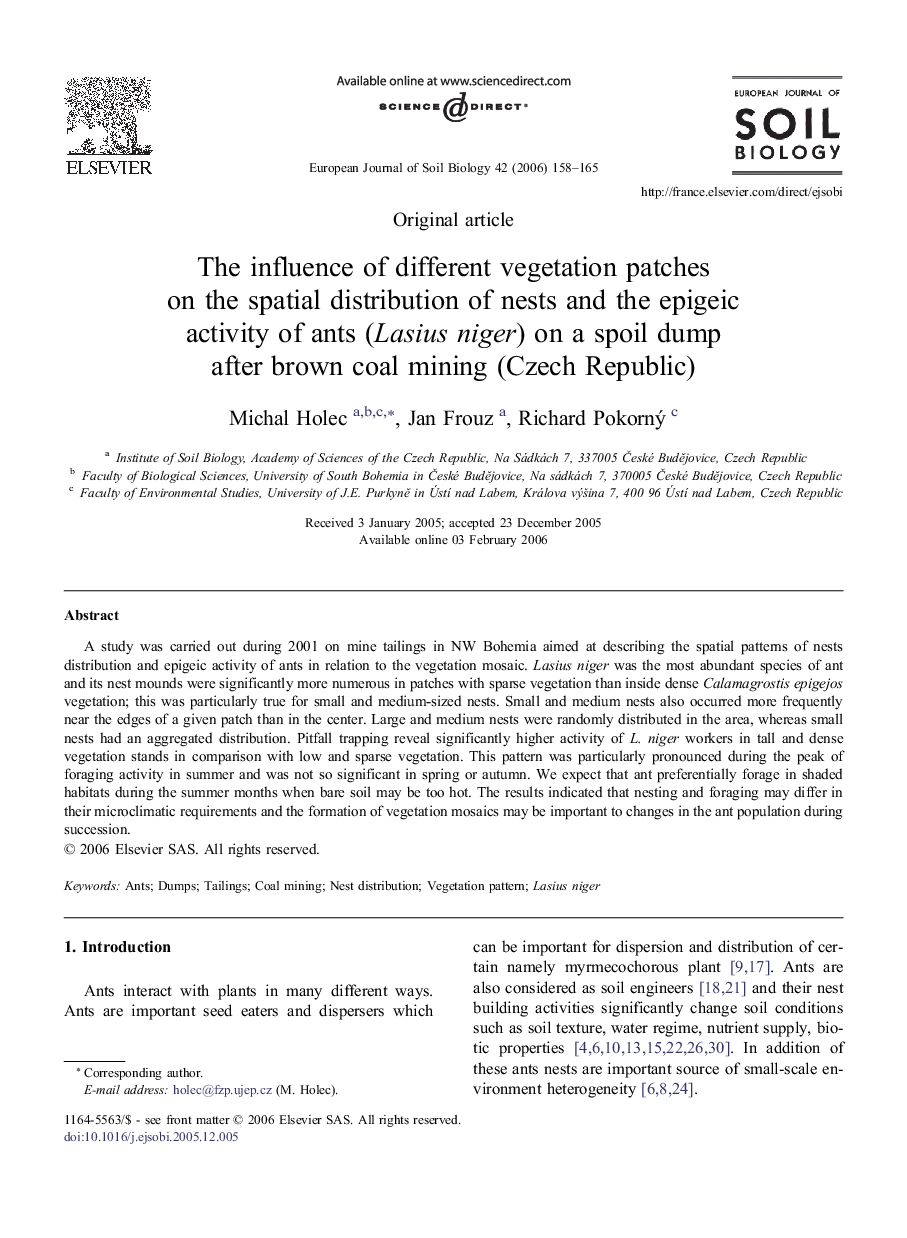| Article ID | Journal | Published Year | Pages | File Type |
|---|---|---|---|---|
| 4392567 | European Journal of Soil Biology | 2006 | 8 Pages |
A study was carried out during 2001 on mine tailings in NW Bohemia aimed at describing the spatial patterns of nests distribution and epigeic activity of ants in relation to the vegetation mosaic. Lasius niger was the most abundant species of ant and its nest mounds were significantly more numerous in patches with sparse vegetation than inside dense Calamagrostis epigejos vegetation; this was particularly true for small and medium-sized nests. Small and medium nests also occurred more frequently near the edges of a given patch than in the center. Large and medium nests were randomly distributed in the area, whereas small nests had an aggregated distribution. Pitfall trapping reveal significantly higher activity of L. niger workers in tall and dense vegetation stands in comparison with low and sparse vegetation. This pattern was particularly pronounced during the peak of foraging activity in summer and was not so significant in spring or autumn. We expect that ant preferentially forage in shaded habitats during the summer months when bare soil may be too hot. The results indicated that nesting and foraging may differ in their microclimatic requirements and the formation of vegetation mosaics may be important to changes in the ant population during succession.
